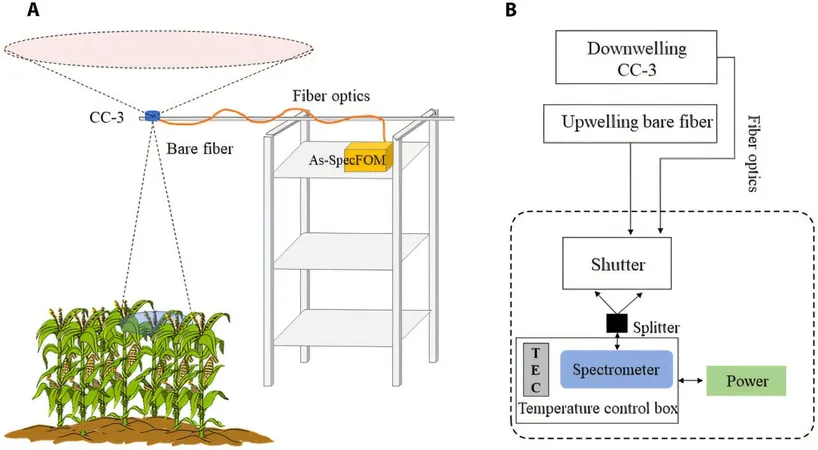
Affordable Spectrometers Transform Plant Health Monitoring: A Breakthrough in Agriculture!
2025-01-10
Author: Mei
Introduction
In a groundbreaking study from researchers at Nanjing University, low-cost, low-configuration spectrometers have been proven effective in capturing solar-induced chlorophyll fluorescence (SIF), the vibrant red glow that plants emit during photosynthesis. This discovery paves the way for more accessible and democratized monitoring of plant health and ecosystem productivity.
Significance of the Study
Published in the Journal of Remote Sensing on December 18, this research highlights the potential of budget-friendly technologies to revolutionize agricultural practices and ecological assessments. SIF is a crucial marker reflecting plant health, productivity, and their responses to environmental change, offering valuable insights into how crops respond to solar energy absorption.
Challenges of Traditional SIF Measurement
Traditionally, measuring SIF involves high-end, expensive spectrometers that are not only costly but also require careful maintenance and handling, making them impractical for widespread field use. Lei Pei, a lead researcher at Nanjing's International Institute for Earth System Sciences, emphasized their objective: "We wanted to find out if simpler spectrometers could be effective for ground-based SIF monitoring."
Research Methodology
To test their hypothesis, the researchers compared a sophisticated spectrometer with an economical alternative at two agricultural sites in China, focusing on wheat and rice crops. Their evaluation included how effectively each device measured SIF, monitored crop productivity (gross primary productivity, or GPP), and captured key growth stages throughout the season.
Findings and Results
Surprisingly, while the results showed variations in SIF value magnitudes, correlations between the two spectrometers exceeded 90%, with minimal discrepancies in data interpretation. Impressively, the low-cost spectrometer performed exceptionally well in tracking wheat's productivity, showcasing an average timing difference of just 2.5 days compared to its expensive counterpart.
Implications of the Findings
This indicates that low-configuration spectrometers can meet the fundamental needs for field-based SIF observations. It's a major advancement in ground-based SIF research," Pei noted. This innovation promises to develop more cost-effective, efficient monitoring systems, making it easier for farmers and researchers to assess plant health on a larger scale.
Future Directions
Looking ahead, the team at Nanjing University aims to fine-tune the accuracy of SIF assessments using these low-cost devices. They plan to explore additional variables that may affect their performance, with the overall vision of creating a reliable framework for in situ SIF observation missions.
Conclusion
Pei concluded, "Our ultimate aim is to ensure these instruments can effectively support research, thus making it easier for various stakeholders to access vital agricultural data." This study not only highlights the potential of affordable technology in agricultural monitoring but also represents a significant leap toward sustainable and innovative farming practices aimed at ensuring food security in our changing climate. Exciting times are ahead for both traditional farmers and agri-tech innovators!
 Brasil (PT)
Brasil (PT)
 Canada (EN)
Canada (EN)
 Chile (ES)
Chile (ES)
 Česko (CS)
Česko (CS)
 대한민국 (KO)
대한민국 (KO)
 España (ES)
España (ES)
 France (FR)
France (FR)
 Hong Kong (EN)
Hong Kong (EN)
 Italia (IT)
Italia (IT)
 日本 (JA)
日本 (JA)
 Magyarország (HU)
Magyarország (HU)
 Norge (NO)
Norge (NO)
 Polska (PL)
Polska (PL)
 Schweiz (DE)
Schweiz (DE)
 Singapore (EN)
Singapore (EN)
 Sverige (SV)
Sverige (SV)
 Suomi (FI)
Suomi (FI)
 Türkiye (TR)
Türkiye (TR)
 الإمارات العربية المتحدة (AR)
الإمارات العربية المتحدة (AR)